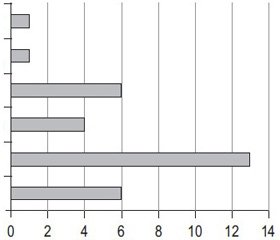Украинский журнал хирургии 3 (34) 2017
Вернуться к номеру
Гострий апендицит: підходи до комплексного хірургічного лікування, клінічна ефективність та економічна доцільність малоінвазійних методик
Авторы: Квіт А.Д.(1, 2), Куновський В.В.(2)
(1) — Комунальна міська клінічна лікарня швидкої медичної допомоги, м. Львів, Україна
(2) — Львівський національний медичний університет імені Данила Галицького, м. Львів, Україна
Рубрики: Хирургия
Разделы: Клинические исследования
Версия для печати
Проведено аналіз комплексного хірургічного лікування вибіркової групи хворих (n = 31) із гострим апендицитом. Оцінено ефективність лікування даного контингенту пацієнтів з урахуванням виду операційного втручання (відкрита/лапароскопічна апендектомія), періопераційної антибактерійної терапії та тривалості перебування на стаціонарному лікуванні. Зроблено висновок, що використання лапароскопічного методу операційного втручання значно знижує тривалість перебування пацієнта на стаціонарному лікуванні незалежно від нозологічної форми гострого апендициту та особливостей клінічного перебігу.
Проведен анализ комплексного хирургического лечения выборочной группы больных (n = 31) с острым аппендицитом. Оценена эффективность лечения данного контингента пациентов с учетом вида оперативного вмешательства (открытая/лапароскопическая аппендэктомия), периоперационной антибактериальной терапии и длительности пребывания на стационарном лечении. Сделан вывод, что использование лапароскопического метода операционного вмешательства значительно снижает продолжительность пребывания пациента на стационарном лечении независимо от нозологической формы острого аппендицита и особенностей клинического течения.
Background. Acute appendicitis continues to be one of the most widespread surgical pathologies. However, the issue of optimizing the diagnostic and treatment algorithm is still an urgent problem. The purpose of this article was to work out approaches to comprehensive surgical treatment of patients with acute appendicitis taking into consideration the type of surgery, perioperative antibiotic therapy, adequate pain treatment, duration of hospital stay. Materials and methods. The analysis of comprehensive surgical treatment of the sampled group of patients (n = 31) with acute appendicitis treated in the surgical departments of Lviv emergency hospital in 2017 was performed. The age of patients ranged from 18 to 77 years. Males were 13 (41.9 %), females — 18 (58.1 %) persons. Duration of hospital stay from the admission was between 2 and 13 days. The level of pain sensation in patients was assessed on a 10-point visual analog scale of pain (VAS) 6, 12 and 24 hours after surgery (with four-step stratification of the received data — absent (0–2), weak (3–4), moderate (5–8), strong (9–10 points)). The entire cohort of patients was divided into two groups on the basis of blinding. One of them (group A) included 18 patients, who underwent the conventional appendectomy, and the second (group B) one consisted of 13 patients with diagnostic laparoscopy, which was transformed into laparoscopic appendectomy if the diagnosis of acute appendicitis was confirmed, or laparoscopic appendectomy was initially performed. The analysis of treatment efficacy was carried out taking into account the dynamics of the pain relief and the duration of hospital stay. Results. As a result of the researches it was stated that according to the clinical course among the general cohort of examined patients, the catarrhal form of acute appendicitis was found in 1 case (3.2 %), acute phlegmonous appendicitis — in 20 observations (64.5 %), acute gangrenous appendicitis — in 7 observations (22.6 %), acute gangrenous appendicitis with perforation and local peritonitis — in 3 cases (9.7 %). Conventional appendectomy was performed in 18 patients, laparoscopic — in 13. All patients in the early perioperative period received anti-bacterial treatment. A prospective analysis showed that the pain syndrome alongpostoperative wounds was observed in patients of the two groups. The severity of the pain syndrome was significantly lower in those patients who had laparoscopic appendectomy. The analysis of treatment of patients with acute appendicitis makes it possible to confirm that the introduction of laparoscopic appendectomy into the surgical treatment of patients with acute appendicitis can significantly reduce the body’s response to stress from surgical trauma and pain, accelerate recovery due to early activation of the patient and maximally reduce the length of hospital stay, which definitely corresponds to the modern principles of Fast Track Surgery. Conclusions. The use of laparoscopic appendectomy makes it possible to significantly reduce the body’s response to stress from pain and surgical trauma and is an important part of the formation of the general condition of the patient. It was also concluded that the comprehensive surgical treatment for acute appendicitis with the use of non-invasive techniques allows to shorten the duration of hospital stay (4.62 ± 0.77 days) and to reduce the period of disability. The method of minimally invasive surgical interventions can be considered a gold standard for providing medical care to the patients with urgent surgical diseases of the abdominal cavity, which provides an optimal approach to surgical treatment.
гострий апендицит; антибактерійна терапія; тривалість стаціонарного лікування; малоінвазивні методики
острый аппендицит; антибактериальная терапия; продолжительность стационарного лечения; малоинвазивные методики
acute appendicitis; antibacterial therapy; duration of inpatient treatment; minimally invasive techniques


/52-1.jpg)
/52-2.jpg)
/53-1.jpg)
/53-2.jpg)